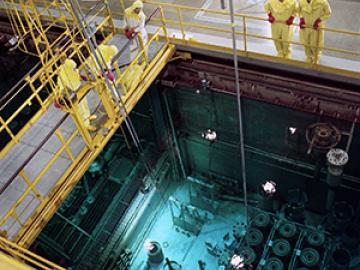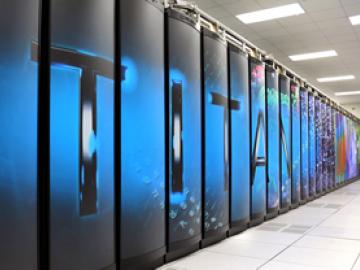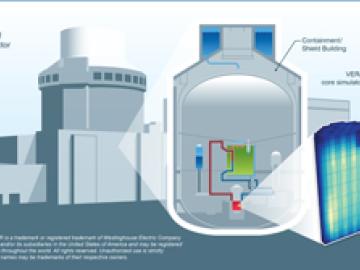Filter News
Area of Research
- (-) Nuclear Science and Technology (27)
- Advanced Manufacturing (7)
- Biological Systems (3)
- Biology and Environment (17)
- Biology and Soft Matter (3)
- Building Technologies (3)
- Chemical and Engineering Materials (2)
- Chemistry and Physics at Interfaces (5)
- Clean Energy (88)
- Climate and Environmental Systems (6)
- Computational Biology (1)
- Computational Chemistry (4)
- Computational Engineering (1)
- Computer Science (3)
- Earth Sciences (1)
- Energy Frontier Research Centers (6)
- Energy Sciences (1)
- Fuel Cycle Science and Technology (1)
- Functional Materials for Energy (8)
- Fusion and Fission (5)
- Fusion Energy (5)
- Geographic Information Science and Technology (1)
- Isotopes (4)
- Materials (81)
- Materials for Computing (12)
- Materials Synthesis from Atoms to Systems (8)
- Materials Under Extremes (5)
- National Security (12)
- Neutron Data Analysis and Visualization (2)
- Neutron Science (33)
- Nuclear Systems Modeling, Simulation and Validation (2)
- Nuclear Systems Technology (1)
- Quantum Condensed Matter (2)
- Quantum information Science (3)
- Renewable Energy (1)
- Sensors and Controls (1)
- Supercomputing (53)
- Transportation Systems (3)
News Topics
- 3-D Printing/Advanced Manufacturing (4)
- Advanced Reactors (7)
- Bioenergy (1)
- Biomedical (1)
- Computer Science (1)
- Coronavirus (1)
- Cybersecurity (1)
- Decarbonization (1)
- Environment (1)
- Fusion (6)
- Isotopes (3)
- Materials Science (1)
- Molten Salt (1)
- Neutron Science (3)
- Nuclear Energy (18)
- Physics (1)
- Space Exploration (2)
- Sustainable Energy (1)
- Transformational Challenge Reactor (3)
Media Contacts

The techniques Theodore Biewer and his colleagues are using to measure whether plasma has the right conditions to create fusion have been around awhile.

OAK RIDGE, Tenn., Feb. 19, 2020 — The U.S. Department of Energy’s Oak Ridge National Laboratory and the Tennessee Valley Authority have signed a memorandum of understanding to evaluate a new generation of flexible, cost-effective advanced nuclear reactors.

Blowing bubbles may be fun for kids, but for engineers, bubbles can disrupt fluid flow and damage metal.

The High Flux Isotope Reactor, or HFIR, now in its 48th year of providing neutrons for research and isotope production at the Department of Energy’s Oak Ridge National Laboratory, has been designated a Nuclear Historic Landmark by the American Nuclear Society (ANS).

A team representing Westinghouse Electric Company and the Consortium for Advanced Simulation of Light Water Reactors (CASL), a Department of Energy (DOE) Innovation Hub led by Oak Ridge National Laboratory (ORNL), has received an International Data Corporation HPC Innovation Excellence Award for applied simulation on Titan, the nation’s most powerful supercomputer, which is managed by the Oak Ridge Leadership Computing Facility at ORNL. s

Oak Ridge National Laboratory researcher John Wagner has been named a 2013 recipient of the Department of Energy’s Ernest Orlando Lawrence Award for his work in advancing computer, information and knowledge sciences.

Scientists and engineers developing more accurate approaches to analyzing nuclear power reactors have successfully tested a new suite of computer codes that closely model “neutronics” — the behavior of neutrons in a reactor core.

